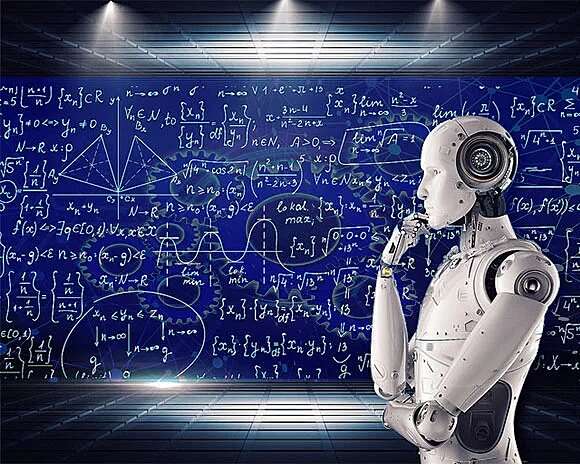Robotic Process Automation (RPA) Uses and Challenges
Robotic Process Automation (RPA) Uses and Challenges,
Robotic Process Automation (RPA) technology is an advanced software technology that automates construction processes, making challenging tasks simpler and manageable.
This technology is not intended to completely replace human labor in construction;
but it makes construction tasks more viable.
Robotic process automation is based on the use of contemporary technologies
such as software or programming to automate construction tasks that require a large number of human resources.
In the construction industry, RPA is often used to carry out repetitive and rule-based activities.
RPA is a powerful tool for automating complex construction activities,
reducing project costs and project lead times.
RPA is preferred by most construction companies because of its versatility that makes it suitable for use on construction sites as well as in the office.

Robotic Process Automation (RPA) Uses and Challenges
RPA Applications
Use On-Sites
Although RPA is more valuable and effective in office management,
it does not mean that it is ineffective in on-site activities.
Whereas, RPA can increase efficiency by performing the following tasks on site:
- RPA technology can be used to make precise and accurate schematic studies; it can be used to lay bricks precisely, according to pre-determined patterns.
- Robotic process automation helps in strategizing and planning the cutting of raw materials, this will make it possible to reduce the waste generated during the application of materials.
- It can be used to manufacture high-quality raw materials on construction sites, and it is highly effective when the raw materials are not purchased but prepared on site.
- It is used in 3D printing building supplies.
- RPA can be used during the demolition process to avoid any safety risks, such as using robots to demolish buildings.
- RPA technology can assist in the storage of building materials, and can aid in the safe and efficient packaging of materials without compromising their inherent characteristics.
Engineering office activities
-
Invoicing
Many contracting companies face cash flow problems resulting from inefficiency in issuing accurate invoices.
Creating invoices is a very rigorous process that requires a lot of data backup,
time and human effort.
One invoice consists of several supporting documents,
and the assembly of these supporting documents requires 8-12 hours of manual human effort.
Here, RPA technology can be used to simplify various activities and compile documents using concurrent operations.
There is a need for a specific RPA design that includes information on the tasks needed to perform invoice generation,
once this RPA design is implemented, this invoice generation process can be reduced to minutes from hours.
Thus, RPA technology will save human resources and reduce time to process,
and this will also eliminate any cash flow issues for construction companies.
-
Document management
Builders store documents, plans, and drawings in the form of an outdated folder system,
and this document management system may have many shortcomings including faulty placement, errors, and document loss.
This affects the overall building activities, in addition, finding the exact position of the volumes is difficult and time consuming.
All documents can be scanned in high quality, and users do not need to locate folders every time.
The RPA tool will automatically find the exact location of the required folder and save the documents in it.
RPA technology also improves management outcomes to improve construction costs, time, and quality.
-
Recruitment
Construction companies need to hire employees with skills and knowledge of construction activities,
and the manual hiring process requires face-to-face interviews, to obtain background information.
As such, the hiring process takes a long time, and there is also room for error.
RPA can scan various recruitment sources such as LinkedIn to hire people with the required credentials and skills.
RPA design only requires basic information such as education, experience, skills, and certification,
and that will help RPA find suitable people based on that information.
-
Cost control and control
RPA also helps create a cost baseline, based on a precisely generated estimation report.
Cost estimation is a rigorous process if done manually, with high chances of errors.
In this regard, RPA tools provide software that needs basic information regarding suppliers,
materials, contractors, and graphics, to automatically generate discretionary reports.
And RPA will perform all the calculations accurately,
a task that is completely impossible for a large-scale complex project if done manually.
Based on these estimates, daily, weekly or monthly cost reports can be produced to understand the project requirements.

RPA Technology Challenges
Although RPA technology offers many innovative tools and methods,
it still lacks its application in the construction field.
Also, most construction company employees are not familiar with RPA and need proper training for its effective use.
A lack of knowledge can lead to inaccuracies in many construction processes,
which can compromise the quality of projects, leading to delays as well as increasing costs.
In addition, these RPA tools are costly to maintain because there is a regular need for upgrades and hardware.
Conclusion
RPA is a useful concept for the construction industry, as all positive effects are directly related to its implementation
The primary purpose of RPA technology is to increase the efficiency and value of the final product,
the construction industry can achieve its main goals (time, cost and quality), with little training of employees through this modern tool.






